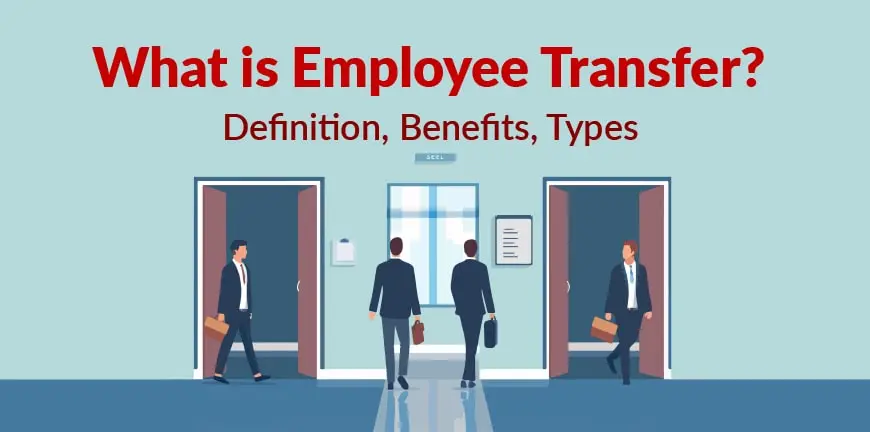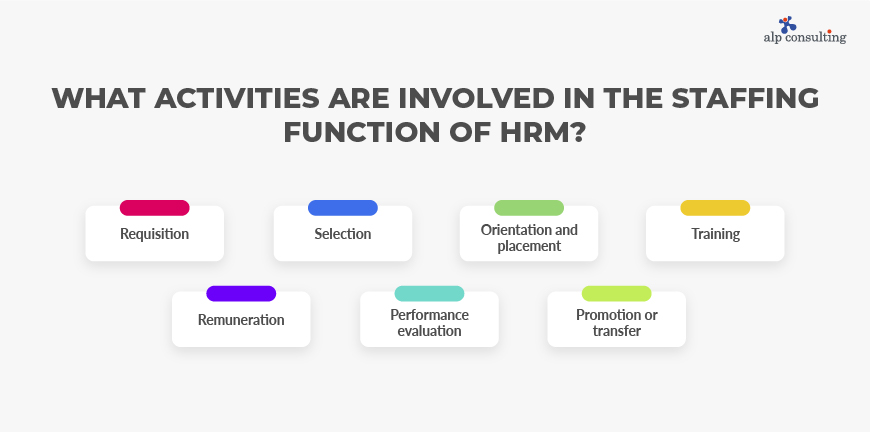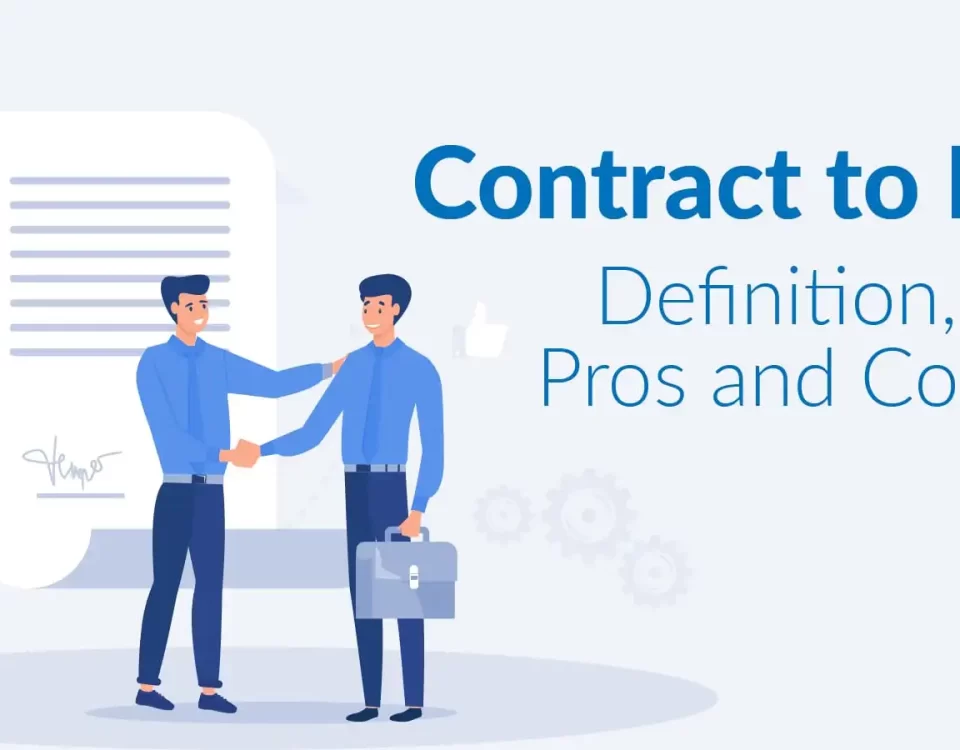
What is Employee Transfer?
10/12/2025
Work-Life Balance: What It Is and How to Achieve It
10/12/2025- What are the Functions of Staffing?
- What is the Process of Staffing in the Management Function?
- What is the Importance of Staffing Function in today’s Environment?
- What Activities are Involved in the Staffing Function of HRM?
- What are the Advantages of the Staffing Function of Management?
- Example of Staffing in Management Function
- How Does Technology Influence Staffing?
- How Does ALP Consulting Simplify Staffing for Businesses?
- Key Takeaways
- Closing words
- Frequently Asked Questions (FAQs)
Every organization wants the right person for the job, but is unsure of how to get them in time and to accommodate a demand. Staffing is the process of finding the right people for the job at the right time, evaluating their performance, and developing a working relationship with them. Through staffing solutions, organizations can maintain a satisfied and productive workforce and also get several other benefits.
What are the Functions of Staffing?
The functions of staffing, which by itself is a function of management, are requisition, selection, training, placement, transfer, and compensation. They can be carried out by an in-house HR team or by a temp agency or staffing company.
What is the Process of Staffing in the Management Function?
Staffing is one of the five traditional functions in management. It is a management function too, as it requires managerial skills, and the most important of all the management functions, the efficacy of every other function depends on how well staffing happens.
What is the Importance of Staffing Function in today’s Environment?
The main importance of staffing is that it helps find people who are suitable for a particular job role, are productive enough, and can contribute to the company’s reputation and growth. It could be for the long-term or short-term and on a full-time or temporary basis.
What Activities are Involved in the Staffing Function of HRM?
There are several steps involved in the staffing function. Let us look at some of them now:

1. Requisition
In the requisition phase, the staffing solutions provider invites applications from candidates based on the completed brief that is sent by the organization requesting staffing services. The staffing provider will post the requirements on multiple portals and will also contact its pre-existing network of great talent.
2. Selection
The selection phase begins with the staffing solutions provider selecting the candidates through several rounds of screening. The rounds of screening will test for professional skills, quantitative, language, and analytical skills, and people and management skills, either through a written test or using an audio or video interview.
3. Orientation and placement
Once the candidates are selected, orientation begins. Orientation is essentially the process of introducing the candidates to the job role, explaining its challenges, and also testing them to see if they are a great professional and cultural fit for the role in the organization. Following this, actual placement begins, and the job role is assigned to the staff member.
4. Training
Training helps to put the placed candidates on track, allowing them to report to the manager, complete tasks, and maintain their productivity in a meaningful manner. It also prepares them for the workplace culture and ensures that they are not left out or left behind at any point.
5. Remuneration
It takes care of the monetary requirements of the staff, how much they are paid, and how often: weekly, monthly, or quarterly. This remuneration will be reconfirmed with the staffing provider in case the hires demand a little more than the set limit.
6. Performance evaluation
A track or record of the performance and behavior of each employee is maintained to ensure that they are continuously assessed at regular intervals throughout their work with the organization. This helps assure the organization that things are moving smoothly and that the performance and productivity of the new staff are also improving.
7. Promotion or transfer
In this step of the process, the staff may be promoted based on performance evaluation, feedback, cultural fit, etc. within the organization to a higher and more demanding role. Alternatively, the staff member may be transferred to a different location or a different department within the organization which would find his/her skills handy.
What are the Advantages of the Staffing Function of Management?
Staffing has several benefits, but there are 4 main advantages of staffing. They are:
1. Jobs for the right people:
Getting the right people for the listed jobs and in the right time and for the right time is a requirement that not every organization can fulfill with an in-house HR team. This is why they need to talk to an HR consulting company like Alp Consulting, which can meet their requirements.
2. Increased productivity:
When the staffing provider makes the right decisions and is resourceful enough, then the productivity of the team goes up, and consequently, this impacts the growth of the company in a positive way.
3. Improved staff member satisfaction:
When the staffing provider makes all the right choices, the employees hired will be a great cultural fit, too, and this will, in turn, lead to greater satisfaction and engagement for each staff member.
4. Organizational harmony:
When there are processes in place for analyzing the performance of hires, understanding how they can improve, and how they can be rewarded, it brings about an understanding between hires and the management, and in turn leads to organizational harmony.
Example of Staffing in Management Function
There are several examples of staffing in management. One of the best examples is a temp-hire. A person is hired for a short period of time to satisfy a specific requirement, such as a project that needs attention. This period generally lasts from three to six months.
When that time is over, the staff member can be offered a permanent role if the person is a good cultural fit and his/her productivity is very good. Not only is this process of temp-to-hire a much faster one, but it also allows the organization not to have to commit to a hire and gives them the flexibility to try other options at a later time and date.
Looking to convert a temp hire to a full-time employee? You must encourage the temp hire to follow a dress code, learn more about the company, get trained on the job role to perform the tasks better, and be proactive at work, identifying issues before it is too late, and contributing solutions that help improve the workplace for the better.
How Does Technology Influence Staffing?
The future of staffing and the process of staffing in management functions will be considerably shaped by advanced tech and data-driven information. Let us delve into the key technological innovations that are likely to influence staffing in 2025 and beyond:
1. AI-backed Recruitment and Staff Management
The wave of Artificial Intelligence is transforming every walk of the recruitment cycle, and organizations or recruiters cannot ignore it. AI-driven tools are speeding up processes from screening to candidate matching.
The tools are also communicating with candidates faster and receiving instant responses, and thereafter providing solutions. This is not only enhancing candidate experience but also making the business operations smooth and efficient.
2. Advent of Blockchain Technology
The introduction of blockchain has also turned out to be a game-changer in hiring. It makes the verification processes of candidates simpler. Transparent candidate records and data are created, and according to research, this technology is likely to reduce candidate verification time by up to 60% by 2026.
3. Flexible and Adjustable Staffing Models
Flexible staffing solutions are significantly gaining momentum across sectors due to their flexibility. As per a survey in India, the IT flexi staffing industry is projected to grow by 7% annually through 2026. To cater to the evolving market demands, companies are adopting contract and project-based work.
4. AR and VR Technologies Taking Over
There is a sudden spike in the utilization of Augmented Reality(AR) and Virtual Reality (VR) to create an immersive training landscape and accelerate remote collaboration. Research suggests that by 2028, 45% of companies using staff augmentation will implement VR/AR solutions for project management and training.
5. Data-Powered Manpower Planning
More enterprises are capitalizing on data and predictive analysis to predict future workforce requirements, accentuate employee engagement, and design and upgrade talent acquisition processes. This approach enables organizations to gain insight and make smart decisions, and align staffing structures and plans with the business goals.
How Does ALP Consulting Simplify Staffing for Businesses?
One of the top-notch and trusted staffing firms, Alp Consulting, assists with making the staffing function of a firm smooth. Our team of experienced professionals will provide you with comprehensive and flexible solutions driven by advanced technology to cater to organizational demands.
We focus on streamlining recruitment processes from candidate sourcing to screening to onboarding. We offer industry-specific staffing solutions for niche sectors with our deep expertise in an array of sectors. We ensure that your business can scale conveniently when there is a requirement, enhancing manpower efficiency, saving cost, and helping you to stay ahead of the curve.
Key Takeaways
- Staffing is a Core Management Function
- Staffing Processes Involve Multiple Strategic Steps
- Effective Staffing Drives Productivity and Harmony
- Technology is Revolutionizing Staffing
- Flexible Staffing Solutions Are the Future
Closing words
As you can see, staffing is a tough job, and there are several things you need to do to get the right person for the job. It is not easy for an in-house HR team to accomplish this task with the same level of perfection and comprehensiveness that an HR consulting company, such as Alp Consulting, can achieve. And we can handle your HRMS needs and compliance, too.
Talk to us today.
Frequently Asked Questions (FAQs)
1. What is the staffing function of management?
Staffing is a function of management as it decides how to put the right people in the right jobs. But it doesn’t stop there. It also involves assessing their performance over time, handling their compensation, etc.
2. Which is not a function of staffing?
Planning for manpower is not a function of staffing. This is because planning is not a managerial function undertaken by the staffing solutions provider. It happens at the organization’s end. Other hr related functions that are not part of staffing are compliance and payroll.
3. What is the difference between recruitment and staffing functions?
Recruitment involves only the first step of staffing, where the job postings are made, and the candidate is selected. Staffing involves several steps after that, like orientation and placement and training, and managing payroll, etc.
4. What is the importance of staffing?
The importance of staffing is that it helps in finding qualified, skilled, and motivated candidates to fill short-term or long-term roles in an organization while ensuring proper utilization of resources.
Contact Us For Business Enquiry

Kasthuri R
Kasthuri R is the Co-Founder & Executive Director at ALP Consulting, bringing over 23 years of experience in search, staffing, and HR consulting. She has been instrumental in driving ALP’s recruitment, employee leasing, and executive search practices across diverse industry verticals. With deep expertise in talent acquisition, HR strategy, and operational management, Kasthuri has built scalable, client-focused solutions that enhance workforce efficiency. Her strategic leadership continues to steer ALP Consulting toward innovation and excellence in people management.






